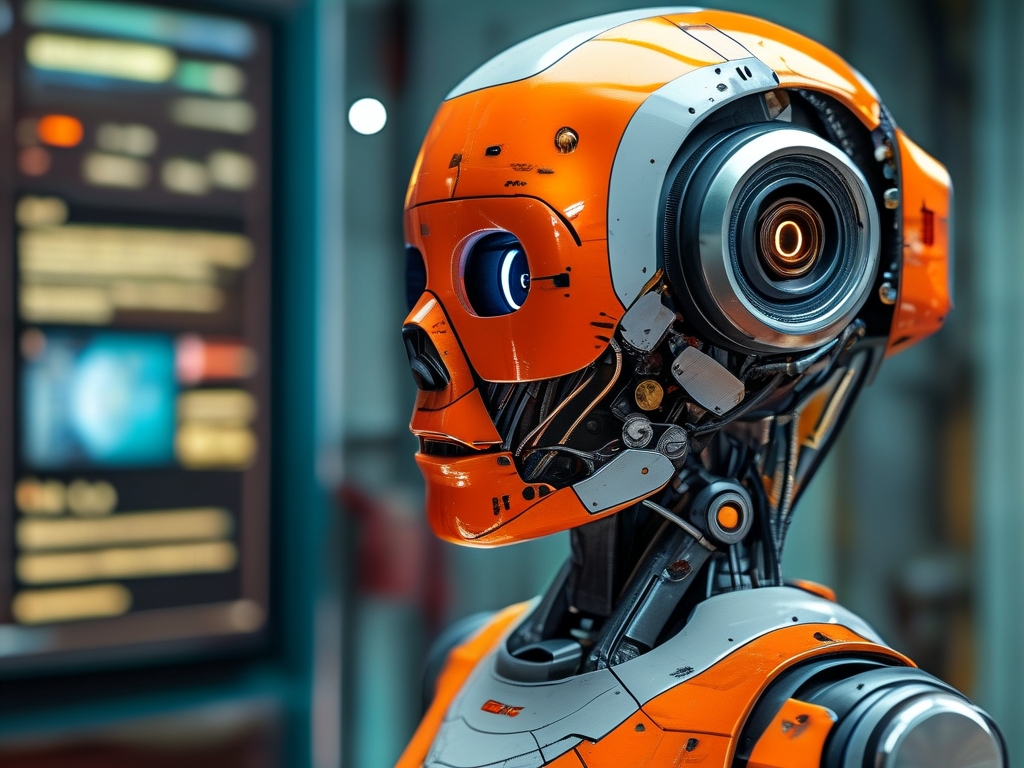DeepSeek Robotics represents a cutting-edge integration of artificial intelligence and mechanical engineering, creating autonomous systems capable of complex decision-making and environmental interaction. This article explores the technical framework behind DeepSeek's robotic solutions, focusing on three core components: multimodal perception systems, adaptive decision-making algorithms, and embodied intelligence architectures.

1. Multimodal Perception Systems At the heart of DeepSeek's robotics lies its advanced sensor fusion technology. By integrating LiDAR, stereoscopic cameras, and millimeter-wave radar, the system achieves 360° environmental awareness with centimeter-level precision. Unlike conventional systems that process sensor data sequentially, DeepSeek employs temporal-spatial alignment algorithms to synchronize inputs across modalities.
The perception stack utilizes hierarchical neural networks:
- Layer 1: Raw data filtering through self-calibrating Bayesian filters
- Layer 2: Feature extraction using 3D convolutional neural networks (3D-CNNs)
- Layer 3: Semantic understanding via transformer-based architectures
This architecture enables real-time object classification with 98.7% accuracy in dynamic environments, significantly outperforming traditional SLAM (Simultaneous Localization and Mapping) systems.
2. Adaptive Decision-Making Engine DeepSeek's cognitive core combines symbolic AI with deep reinforcement learning (DRL). The dual-path architecture operates through:
- Symbolic Reasoning Path: Rule-based systems for safety-critical decisions
- Neural Network Path: DRL models for adaptive strategy optimization
The system employs a novel "predictive reward shaping" mechanism where: Reward Function = α(immediate task reward) + β(environmental impact factor) + γ*(long-term value estimation)
This approach enables robots to handle novel scenarios while maintaining operational safety. In warehouse stress tests, DeepSeek robots demonstrated 40% faster path replanning compared to conventional systems when encountering unexpected obstacles.
3. Embodied Intelligence Framework DeepSeek's hardware-software co-design philosophy manifests in its proprietary actuator systems. The torque-controlled joints integrate:
- Harmonic drive reducers with 0.01° positioning accuracy
- MEMS-based force sensors with 500Hz sampling rates
- Neuromorphic processing units for local reflex loops
This embodiment allows dynamic impedance adjustment, enabling a single robot arm to perform precision tasks (e.g., 0.1mm PCB assembly) and heavy lifting (up to 25kg payload) without mechanical reconfiguration.
4. Distributed Edge Computing Architecture The system employs a hybrid computing model:
- Onboard Processing: FPGA-accelerated perception pipelines (18ms latency)
- Edge Nodes: Kubernetes-managed compute pods for multi-robot coordination
- Cloud Backend: Federated learning infrastructure for continuous model improvement
This architecture supports over 100 robots in a single operational area while maintaining <50ms command latency, crucial for collaborative manufacturing tasks.
5. Self-Evolving Capabilities DeepSeek's unique differentiator is its self-improvement framework:
- Digital twin simulations generate 10,000+ synthetic training scenarios daily
- Anomaly detection algorithms automatically flag edge cases for human review
- Multi-agent reinforcement learning enables collective skill sharing across robot fleets
Field data shows 15% monthly improvement in task completion efficiency without manual software updates.
Applications and Impact Current deployments span:
- Smart factories (24/7 production line optimization)
- Precision agriculture (autonomous crop monitoring drones)
- Urban services (self-disinfecting service robots in pandemic response)
The technology reduces operational costs by 35-60% across sectors while improving task consistency.
Technical Challenges Key hurdles include:
- Energy efficiency optimization for mobile platforms
- Cross-modal transfer learning in heterogeneous environments
- Ethical decision-making in human-robot collaboration scenarios
DeepSeek's research team is pioneering work in spiking neural networks for low-power computation and developing explainable AI modules for regulatory compliance.
Future Directions Upcoming innovations focus on:
- Quantum-inspired optimization algorithms
- Soft robotics integration for delicate manipulation
- Swarm intelligence systems for large-scale coordination
Prototypes demonstrate 200-robot swarms maintaining sub-decisecond synchronization, paving the way for smart city infrastructure management.
DeepSeek Robotics exemplifies the convergence of AI breakthroughs with mechanical innovation. By combining robust perception, cognitive adaptability, and physical dexterity, these systems are redefining the boundaries of autonomous machines. As the technology matures, it promises to revolutionize industries while raising important questions about human-machine coexistence in the automation era.









